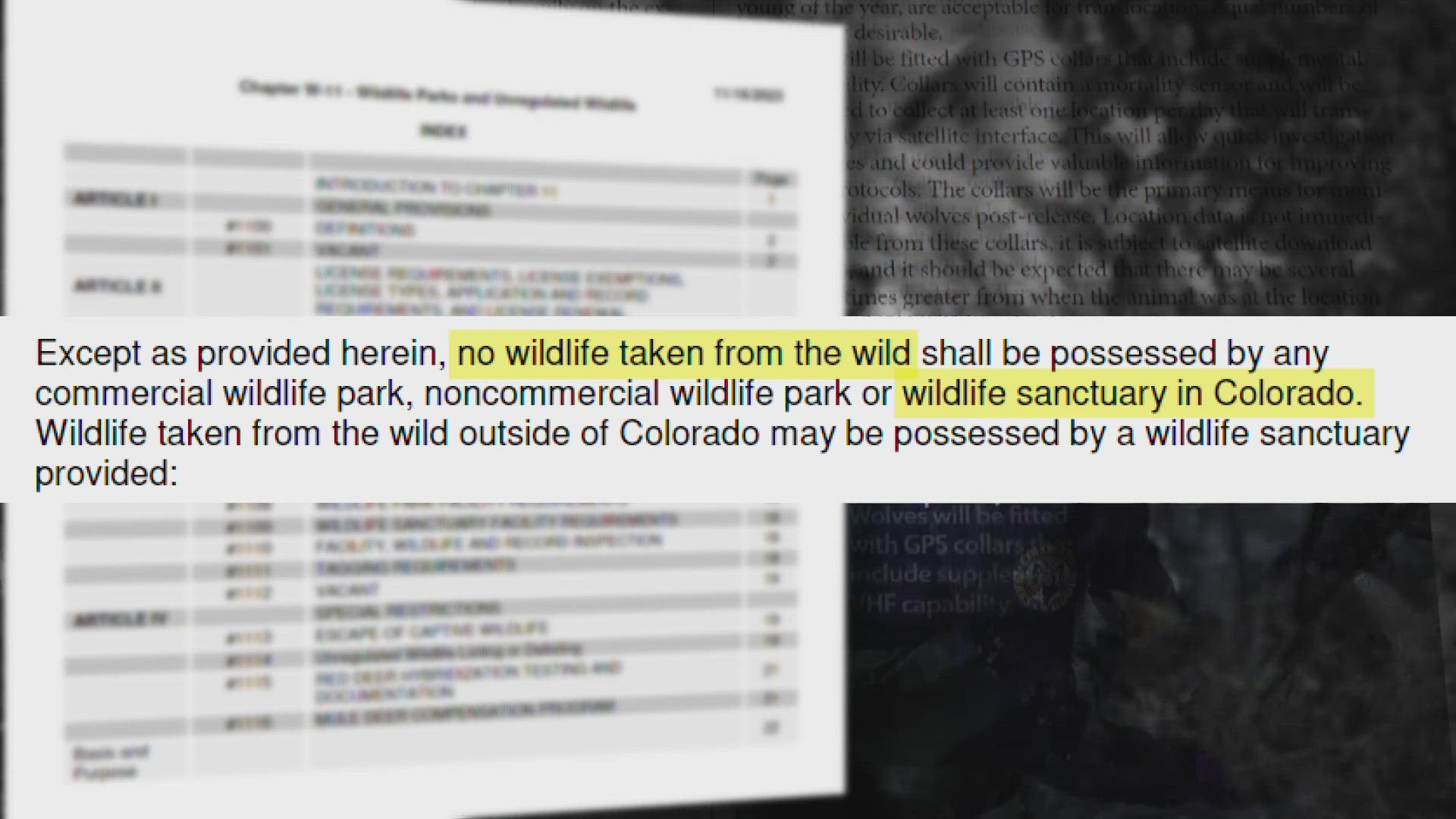DENVER — Almost a week ago, Colorado Parks and Wildlife (CPW) announced its employees "have begun an operation to capture and relocate wolves" from Grand County.
The Colorado wildlife agency said it is relocating wolves from the Copper Creek pack – two adults and at least three pups – that are responsible for livestock depredations.
CPW has not given an update on the operation since that announcement, but when it comes to capturing wolves, few have more experience than Carter Niemeyer.
"It's a whole science," he said.
In his career, which included working for U.S. Fish and Wildlife Service to help reintroduce wolves to Yellowstone, Niemeyer estimates he's caught about 300 wolves.
"Pups are easy to catch," he said. "The adults, it just depends."
As CPW tries to catch the wolves of the Copper Creek pack, Niemeyer said there are two methods: By helicopter or by traps laid on the ground.
A highly trained wildlife trapper could use a helicopter to shoot a wolf with a dart or catch them in a net, he said. It also takes highly trained pilots.
“Having highly qualified pilots that can safely deliver you within probably 20 to 25 feet, or closer, to a running wolf," he said.
It might also take another time of the year because the leaves make it hard to see to the ground.
“Everything is dense this time of year," Niemeyer said. "Until the autumn leaves fall, there’s a lot of hiding places for animals to go."
The other method to catching wolves is from the ground, using a foothold trap. When 9NEWS asked CPW whether they can use these traps, a spokesperson referred us to a federal permit that allows use of the traps to capture and relocate wolves.
"It's all very precision, whether you're trapping or using helicopters," Niemeyer said.
Since April, wolves in Grand County have killed 16 cows and sheep, CPW said. Even though CPW hasn't updated the public on the capture of those wolves, its operation began at least six days ago. That's long enough for Niemeyer to have caught a wolf.
"I fully expected to have a wolf within three days in a foothold trap," he said. "If I didn't have one within three days, I was doing something wrong."
CPW's director has not explained what relocation means after the wolves are caught. The organization's options appear limited.
The state's wolf management plan states problem wolves won't be moved elsewhere in Colorado.
"The translocation of depredating wolves to a different part of the state will not be considered, as this is viewed as translocating the problem along with the wolves," the plan reads.
CPW also has a regulation that states Colorado's wildlife shall not be taken from the wild and moved to a sanctuary in Colorado.
"Except as provided herein, no wildlife taken from the wild shall be possessed by any commercial wildlife park, noncommercial wildlife park or wildlife sanctuary in Colorado," the regulation states.
"I'm hoping for a good outcome," Niemeyer said. "If they pull it off, I commend them, but it's not going to be easy."
A CPW spokesperson said the organization will provide an update when the operation is complete.

